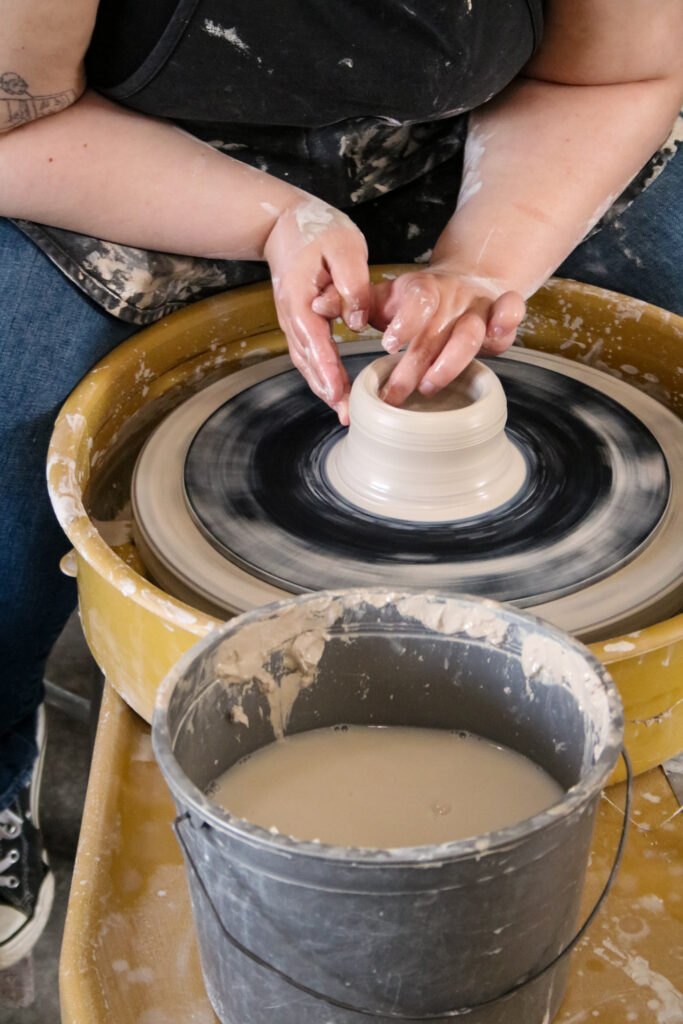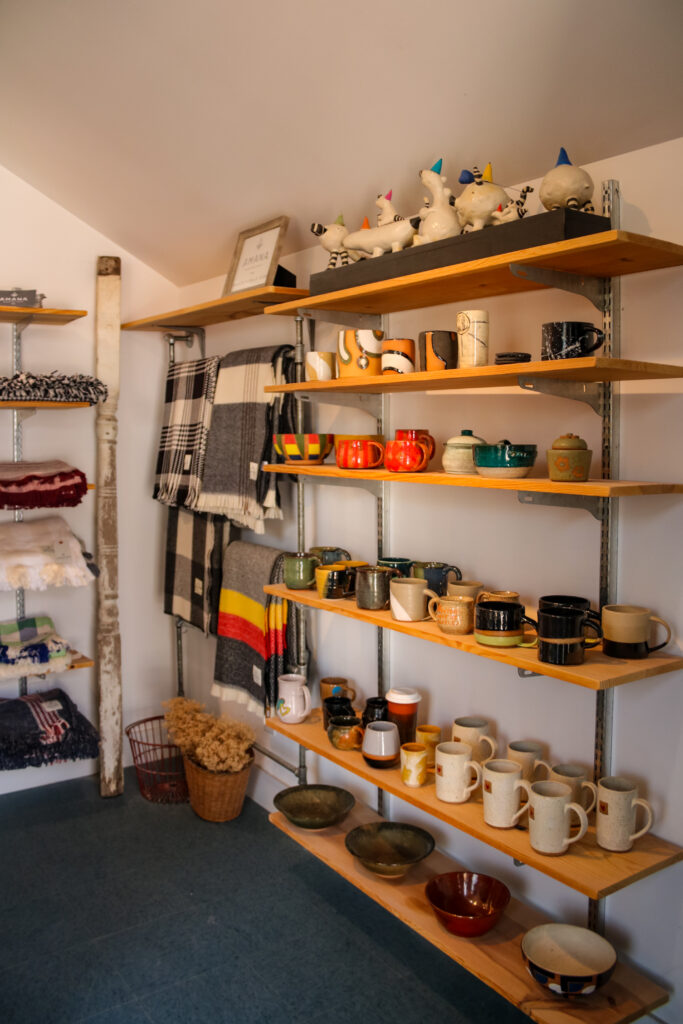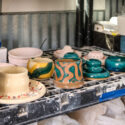It looks so easy. Grab a chunk of clay. Wedge it to look like a ram’s head. Put two fingers’ worth of water on the wheel and throw the clay down. Center it. Open up the middle. Shape the clay how you want. Suddenly, it’s art.
Except it’s not easy. Though it’s also not scary. In fact, the feeling of the clay spinning and changing shape is pretty relaxing. Which is one of the things that drew Anna Gilbreath back to pottery.
It was the pandemic. She, like most folks, was stuck at home looking at social media. She saw lots of artists sharing their creations. She’d dabbled in college—and she remembered that feeling. So she started counting the days to when she could get back on the wheel.
“People started posting a lot of content and developing their hobbies, and I got to see that happen,” Gilbreath said. “That really inspired me, and having an excess of time allowed me to get into different things.”
She ended up at Kunzler Studios. Kelly Kunzler and Kendall Kunzler Lensch, the siblings who run Kunzler Studios alongside their parents, saw a lot of folks like Gilbreath. The pandemic allowed—or maybe forced— people to reevaluate their priorities.
“Everyone kind of faced their own mortality a little bit,” Lensch said. “And I think people had a bucket list.”
As a result, Kunzler Studios saw far more people coming in to try pottery. Lensch says that people who came into the studio were looking for opportunities to live for themselves and do things they enjoy, rather than just working all day every day. Pottery became therapeutic for them.
The pottery wheel is a place for Gilbreath to let go of her perfectionism. A handmade mug is never going to be as perfect as one made by a machine. Every handmade piece is unique, and Gilbreath had to learn to be okay with that.
“There is definitely a mind battle in it, which just kind of keeps me coming back and keeps me excited to learn different techniques,” she said.
For other potters, it is the physical work of handling the clay that keeps them coming back to the art.
“It’s really therapeutic to make something with their hands, and I have to do that,” Kunzler said. “I could not do a corporate job, it would drive me insane.”

The Business Side of Things
Many who found comfort in handmade arts during the pandemic also started their own businesses.
“I think that a lot of people realized that their corporate jobs were not what they wanted to do,” Gilbreath said. Many people she knew who were doing pottery as a “side hustle” took steps to turn pottery into their full-time jobs.
The pandemic’s increase in social media use also allowed hopeful artists to establish themselves as creators and gain their own audiences. Kunzler and Lensch both agreed that many artists’ success is linked to how well they market themselves. The siblings shared a story of an art professor who told them that as artists, it was their duty to put their work where others could see it. A large part of that includes marketing.
“If you’re better at social media, you can be a sort of average artist who’s got really good social media presence versus a really good artist who’s got zero social media presence,” Lensch said.
For artists like Gilbreath and the Kunzlers who do pottery full-time, it’s not always about making exactly what they want to make. Artists have to make what customers will want and what will sell. A person’s passion might not be making fifty mugs a day, but that might be what they end up doing.
“There’s this whole art world that kind of doesn’t really talk about the business side,” Gilbreath said. “Not a lot of people know about it and it’s sometimes hard to talk about selling your work because the art world is so focused on just making it.”

Starting Pottery
Pottery isn’t an easy hobby to take up. Unlike, say, drawing, where all you need is a pencil and paper, pottery requires specific tools that can add up.
“With pottery, wheels are like $1,200 each…and our new kiln was $13,000,” Lensch said. “That’s partially why pottery in particular is a little less accessible to the masses.”
Because materials are expensive, classes can be expensive, too. If a person does have the money, though, taking a group class can be a fun and easy way to start. Kunzler Studios offers classes anywhere from one person to a group of six. Independent artists with their own studios also offer small group lessons.
But pottery is also really forgiving. It’s a great medium for those that don’t consider themselves very creative. They don’t have to think of brand new ideas every time they sit down at the wheel. If they can learn and master the steps they’re taught, they can make something beautiful and even practical.
According to Gilbreath, pottery isn’t super easy at first. It can take a long time to get the hang of things, and the first time a person throws clay might not lead to a masterpiece. Even so, experimenting with the clay and making something with your hands can be fun and relaxing.
“It’s good to just play with your hands and get your hands in the mud,” Gilbreath said. “Just being pulled away from everyday routine, I think, is really healthy.”

